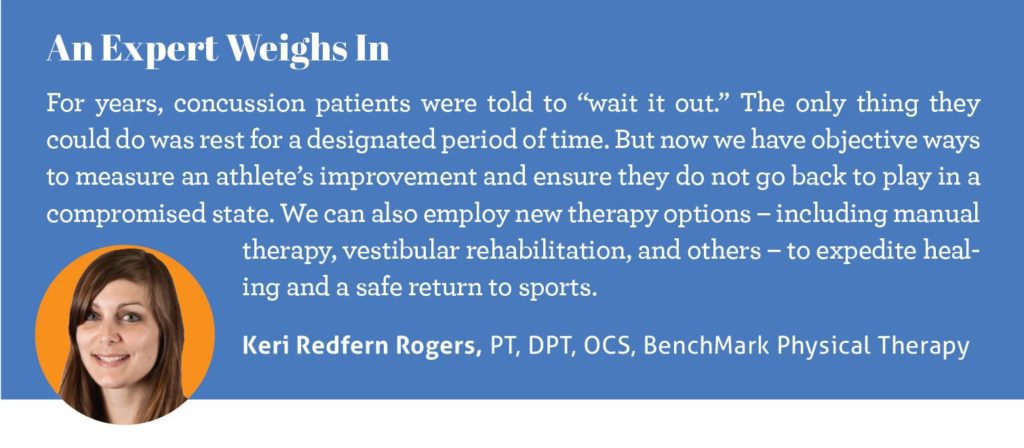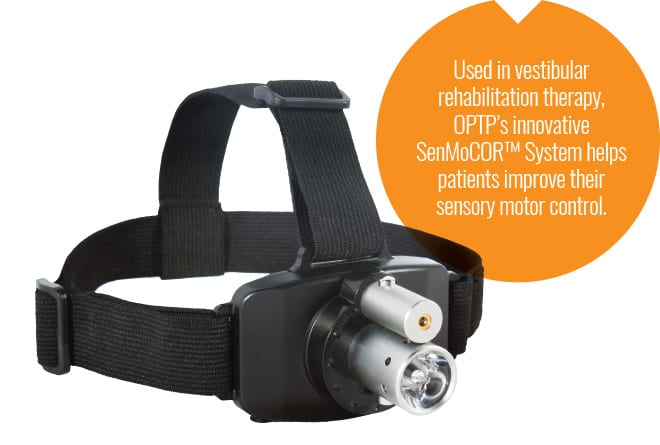New therapy options are helping athletes recover faster from traumatic brain injuries.

While rest is critical in the immediate aftermath of a concussion, new research shows an active rehabilitation program can be extremely useful in managing prolonged symptoms and stimulating a faster recovery. Concussion rehabilitation may include manual therapy, vestibular rehabilitation, a return-to-exercise program, or a combination of all three.
Manual Therapy
Manual therapy is designed to address any neck dysfunction – muscle or joint – accompanying a traumatic brain injury. No devices or machines are involved; a therapist uses only his or her hands to mobilize joints and muscle tissue. The goal is to improve muscle and joint mobility and resolve any symptoms of pain, restricted movement, dizziness, impaired vision, or headache.
Vestibular Rehabilitation
Trauma to the head can impact the body’s vestibular system, leading to balance problems and symptoms of dizziness and vertigo. Vestibular rehabilitation focuses on restoring normal connections between different parts of the brain and improving the relationship between the inner ear, brain, eyes, muscles, and nerves.
Vestibular rehabilitation therapy typically includes a series of exercises designed to strengthen eye muscles, improve gaze stability during movement, correct balance issues, and overcome challenges related to spatial orientation. Research shows patients who undergo this therapy may be able to return to regular activity quicker than those who do not.


Return-to-Exercise Program
Trauma to the head can also impact the body’s autonomic nervous system, which controls important functions like heart rate. Because of this, many physical therapists use graded return-to-exercise programs to help athletes safely ramp up their cardiovascular endurance again. Athletes go through five phases of sport-related activity, beginning with gentle exercises and concluding with full-out sprints. All the while, a physical therapist monitors their heart rate and blood pressure to ensure nothing is amiss.
(above) Photos Courtesy of OPTP/optp.com

